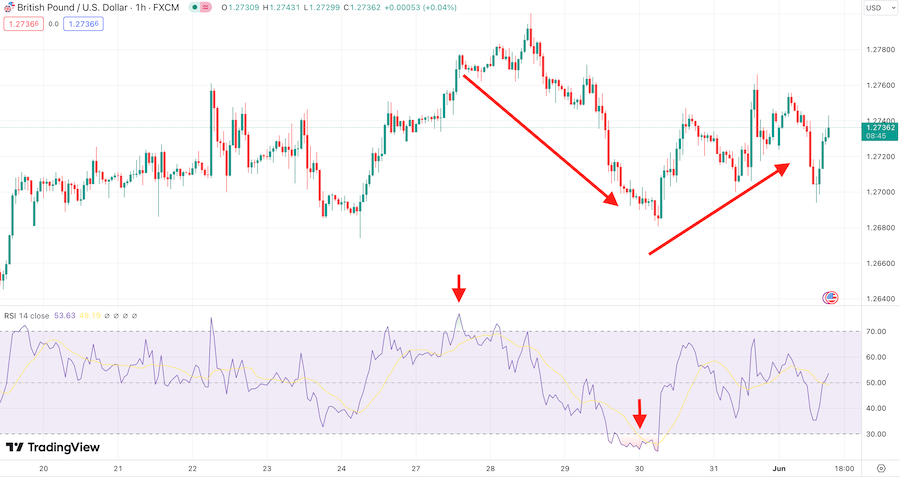What Are Forex Trading Signals?
Forex trading signals are suggestions or recommendations for entering and exiting trades in the foreign exchange market. These signals are generated based on various forms of analysis, including technical indicators, historical data, and market trends. They provide traders with valuable information about potential trading opportunities, helping them make informed decisions.
Types of Forex Trading Signals and How They Work
Forex trading signals can be generated in various ways, each offering unique advantages to traders. Here are the main types:
- Manual Signals:
- Generated by experienced traders or analysts who interpret market data and trends to provide trading recommendations.
- Based on human expertise and market knowledge.
- Automated Signals:
- Created by algorithms and trading robots that analyze market data in real-time to identify trading opportunities without human intervention.
- Rely on technical indicators like moving averages, RSI (Relative Strength Index), and MACD (Moving Average Convergence Divergence).
- Copy Trading:
- Allows traders to mirror the trades of successful traders, either manually or automatically through trading platforms.
These signals typically work by using technical analysis, which involves studying past market data, such as price movements and trading volume, to forecast future price trends. Automated systems leverage algorithms to scan the market and identify potential trades, providing signals based on predefined criteria. In contrast, manual signals come from the expertise and interpretation of seasoned traders and analysts.

Benefits of Using Forex Trading Signals
Using forex trading signals offers several advantages, especially for beginners:
- Time-Saving: Signals save time by providing ready-made trading opportunities, allowing traders to focus on other aspects of their trading strategy.
- Informed Decisions: They provide valuable insights and data-driven recommendations, helping traders make informed decisions.
- Reduced Emotional Trading: Signals can help reduce emotional trading by providing objective entry and exit points.
- Learning Opportunity: Beginners can learn from the signals and improve their own trading skills over time.
- Accessibility: Many signal services are available through convenient platforms like Telegram, making it easy to receive and act on signals in real-time.
Tips for Beginners on Using Forex Trading Signals Effectively
- Choose a Reliable Signal Provider:
- Research and select a reputable signal provider with a proven track record. Look for reviews, testimonials, and performance statistics.
- Example: FX SMS offers reliable signals based on advanced algorithms.
- Understand the Signals:
- Take the time to understand how the signals are generated and what they mean. This will help you trust the signals and use them effectively.
- Learn about different types of signals, such as entry signals, exit signals, stop-loss levels, and take-profit levels.
- Risk Management:
- Always use proper risk management techniques, such as setting stop-loss orders and managing your position size to protect your capital.
- Example: Never risk more than 2% of your trading account on a single trade.
- Combine with Your Own Analysis:
- While signals can be helpful, it’s important to combine them with your own analysis and judgment. Use signals as a tool, not a crutch.
- Example: Use signals in conjunction with your own technical analysis or fundamental analysis.
- Start Small:
- Begin with small trade sizes to get comfortable with using signals. Gradually increase your trade size as you gain confidence and experience.
- Example: Start with micro-lots (0.01 lots) and gradually move to larger positions.
- Stay Updated:
- Keep yourself updated with market news and developments that might impact the effectiveness of the signals. Markets can be volatile, and external factors can influence trading outcomes.
- Example: Follow financial news websites and economic calendars to stay informed.
- Track Your Performance:
- Keep a trading journal to track the performance of the signals you use. This will help you identify which signals are most effective and improve your trading strategy over time.
- Example: Record the details of each trade, including entry and exit points, reasons for taking the trade, and the outcome.
Common Mistakes to Avoid When Using Forex Trading Signals
- Over-Reliance on Signals:
- Relying solely on trading signals without understanding the underlying analysis can be risky. Always conduct your own research.
- Ignoring Risk Management:
- Failing to implement proper risk management strategies can lead to significant losses, even with accurate signals.
- Chasing Losses:
- Avoid the temptation to increase trade sizes to recover losses quickly. Stick to your risk management plan.
- Not Reviewing Signal Performance:
- Regularly review the performance of the signals and the provider. If the signals consistently underperform, consider switching providers.
Conclusion
Forex trading signals can be a valuable tool for both novice and experienced traders. By understanding what they are, how they work, and their benefits, you can make more informed trading decisions. Remember to choose a reliable signal provider, use proper risk management, and combine signals with your own analysis for the best results.









